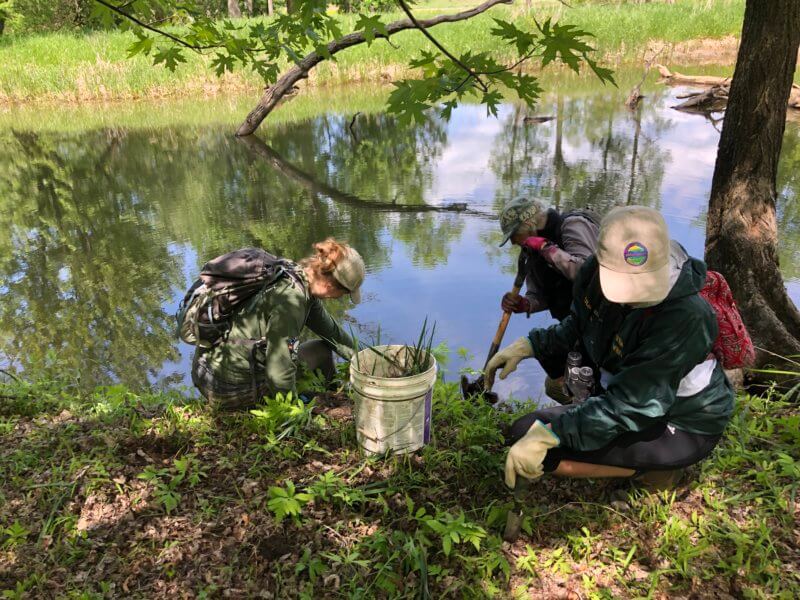Lewis Creek Association wraps up study of yellow iris control
Yellow iris (Iris pseudacorus), with its striking yellow flowers, is a beautiful plant, but also a threat to our priority natural communities and native plants. In recent years, it has gained a foothold in many Lake Champlain wetlands and floodplain forests (priority natural communities, as documented by Vermont Fish & Wildlife Natural Heritage Program). Lewis Creek Association (LCA), in partnership with the Lake Champlain Basin Program, Vermont Fish & Wildlife Department, and HRS/Riverscape Ecology began studying this problem in 2015; this year, LCA wrapped up a three-year study of yellow iris in Ferrisburgh, in the 12-acre Little Otter Wildlife Management Area (at the mouth of Lewis Creek and Little Otter Creek).

The lake-influenced lower reaches of Lewis Creek contain important floodplain forests, buttonbush swamps and a range of state significant emergent plant communities. This study, funded by the Vermont Fish & Wildlife Department, funded a survey of yellow iris from the North Ferrisburgh falls to the mouth of the lake, as well as a test of removal methods, and coordination to lead volunteers in yellow iris removal. Over the course of three seasons, volunteers dug out 335 clumps and 710 single yellow iris plants (using 125 volunteer hours). Larger clumps that were too big to dig (126) were treated chemically in the fall using a wetland approved herbicide, to minimize impacts on amphibians and other plants.
Results of the study showed that both methods (digging and chemical control) were effective at eliminating yellow iris clumps. Volunteers learned to identify yellow iris from the native blue-flag iris (Iris versicolor) even when it was not in bloom, using the tint at the base of the leaves (yellow vs. blue/purple) and leaf form (more upright on yellow iris, more droopy on blue-flag iris). LCA hopes yellow iris populations at Little Otter WMA will remain at low levels with annual maintenance. LCA Program Manager Kate Kelly encourages all home gardeners to familiarize themselves with yellow iris, and to remove it from their gardens (or to encourage removal from other public places), as it spreads easily to natural areas. Additional information on the project is available on LCA’s website.

